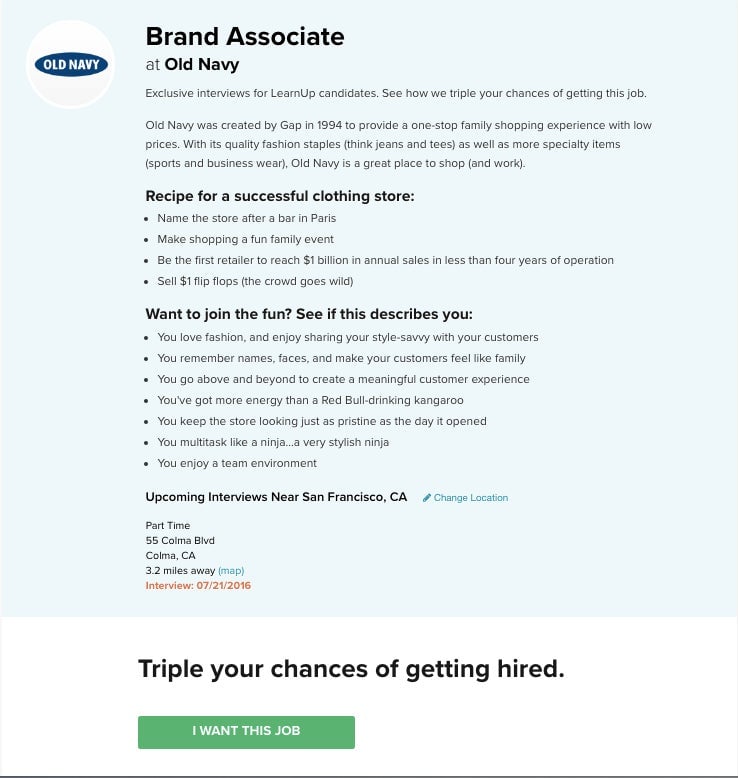Big box stores rehire half their hourly workforce every year, and that’s going to change with a push of a button
What separates millions of people from employment is not a lack of jobs. It’s training.


What separates millions of people from employment is not a lack of jobs. It’s training.
Even in entry-level jobs, a skills shortage is a leading reason for vacancies, according to a McKinsey survey of global firms (pdf, p 18). College is not a panacea: Entry-level job skills aren’t part of traditional curriculums or affordable for many. College often isn’t even necessary. Only four of the top 30 occupations with the highest growth by 2020 will require a bachelor’s degree, says the US Bureau of Labor Statistics.
How can America educate its entry-level workforce? Alexis Ringwald, CEO and Co-founder of LearnUp and Yale graduate, spent months standing in unemployment lines and clicking through online applications to figure it out.
She discovered that employers and employees face enormous hurdles to make a match. Candidates are often in the dark about the nature of the jobs. Virtually no guidance is given until a worker’s first day, and training is cursory or non-existent.
Employers, on the other hand, are desperate to find trained staff, but don’t have the time to offer much personalized attention. Instead, they play a numbers game, hiring as many people as possible in expectations that most will leave. The 90-day turnover rates in industries such as food service and retail range from 66% to 110%, respectively.
Ringwald thought a better way was possible. “Everything is against the job seeker. It’s all about weeding you out with algorithms,” she said in an interview. “Let’s coach them instead of filtering them out.”
Ringwald started LearnUp in 2012 to scale entry-level job training for the 13 million Americans working in retail, food and customer service and related sectors. Many of them have minimal experience navigating the application process, have never created a resume or LinkedIn profile. The startup adds a “I want this job” button to recruiting webpages and platforms.

Prospective employees can click on the button to open an interactive summary of the job and complete a 60-minute course outlining training and job requirements. A contact form or live chat option for applicants is in the upper corner. “Now [candidates] can take this training and be qualified,” says Ringwald.
Only about 10% of potential applicants click on LearnUp’s button, says the company, but they represent about 40% of new hires. Completing the course triples an applicant’s chances of getting hired, and employers’ average number of interviews per hire have dropped from 6.8 to just 2.3. Turnover rates have also fallen by 30%.
Those are big savings. Retailers pay about $3,400 when a worker quits, estimates Bloomberg. With an average retail staff turnover rate of 5% per month, a company like Walmart, which has 500,000 employees, probably spends about $1 billion per year to rehire about 60% of its workforce annually.
Ringwald says simple, self-directed education can unlock talent compared to today’s sink-or-swim model. “The number one reason people quit is that they don’t understand what the role actually requires,” she says. LearnUp is working with companies like Old Navy/Gap, Spring, AT&T, Whole Foods’ 365 division and Williams-Sonoma.
The image above was taken by The University of Michigan School of Natural Resources and shared under a Creative Commons license on Flickr.